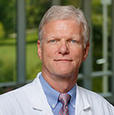What you leave behind is not what is engraved in stone monuments, but what is woven into the lives of others. (attributed)
- Pericles
Before I went to medical school, I worked as an orderly in a private hospital. It was not glamorous work, but I loved the people. It was there that I had my first glimpses into the joys and sorrows of Medicine.
Like most hospitals in the early 1970’s, ours invested few resources on amenities, technology, or marketing. Patients stayed many days or even weeks for relatively minor illnesses. The X-Ray Department’s new, painfully slow CT scanner could only study the brain and was frequently out-of-order. The doctors, particularly the surgeons, were supremely confident in their skills, having been steeled by service in military hospitals in Europe and the South Pacific during World War II. The last remaining general practitioners finally gave up delivering babies, but they still set broken wrists, lanced boils, performed minor surgery, and made house calls.
In those days, each patient’s own personal physician managed his or her care whenever they were hospitalized; I remember seeing the internists and family doctors arriving early in the morning to make rounds before heading to the office. If they had six or seven people in the hospital, rounds would take a while. The physicians returned to the hospital before they went home in the evening, as well. On their days off, they made rounds only once unless someone was particularly ill.
The hospital’s cafeteria was nothing special. A single, long serving line ended as the cash register. The families and employees spilled from there into the large seating area with rows of Formica tables and plastic chairs. Long lines and crowds were normal at lunchtime.
A doorway off of the seating area led to the “Doctors' Dining Room.” Although I never actually entered, I often peeked in to see what was happening. Their dining room was less crowded than ours. Sometimes, there would be a lecture and, on those days, a table would hold free sandwiches, chips, and sodas. Other times, the doctors would be seated in small groups, talking and laughing. Some would have pushed their trays aside and, in those days, would be smoking cigarettes, using their dessert plates as ash trays.
I am a child of the 1960’s, and freely admit that the very idea of a “Doctors’ Dining Room” seemed elitist. Why did they get their own room? Why did they get a free lunch? It seemed wrong! We spent our lunchtimes plotting to crash their room and sit at their tables. We never did, of course.
Perhaps, in retrospect, the “Doctors' Dining Room” was elitist. However in those days before HIPAA, the room provided a safe place for doctors to discuss patients without risk of being overheard. Before the Internet, it was the only place besides the ancient hospital library where a physician could gather information or pick a colleague’s brain about a difficult case. Before the pharmaceutical companies allocated astronomical budgets for marketing to doctors and the public, the room was the only place where a busy, solo practitioner might learn about new medications.
I returned to the old hospital a few years ago to visit an old family friend. After the visit, I stopped by the cafeteria. The serving line had been broken up and rearranged a bit, and there was now a short-order grill, a Grab-and-Go counter, and a salad bar. After paying for my meal, I stepped into the dining area and was transported back in time. I immediately noticed, however, that the wall between the seating area and the “Doctors’ Dining Room” had been removed.
The cafeteria was not crowded and I intentionally found a table in the area that had once been off-limits. As I looked around, I reflected on my journey since my days working at that hospital. I gratefully remembered stories of many of the old physicians who had once gathered in that space. Thanks to them, I am still learning each day of Medicine’s joys and sorrows.
